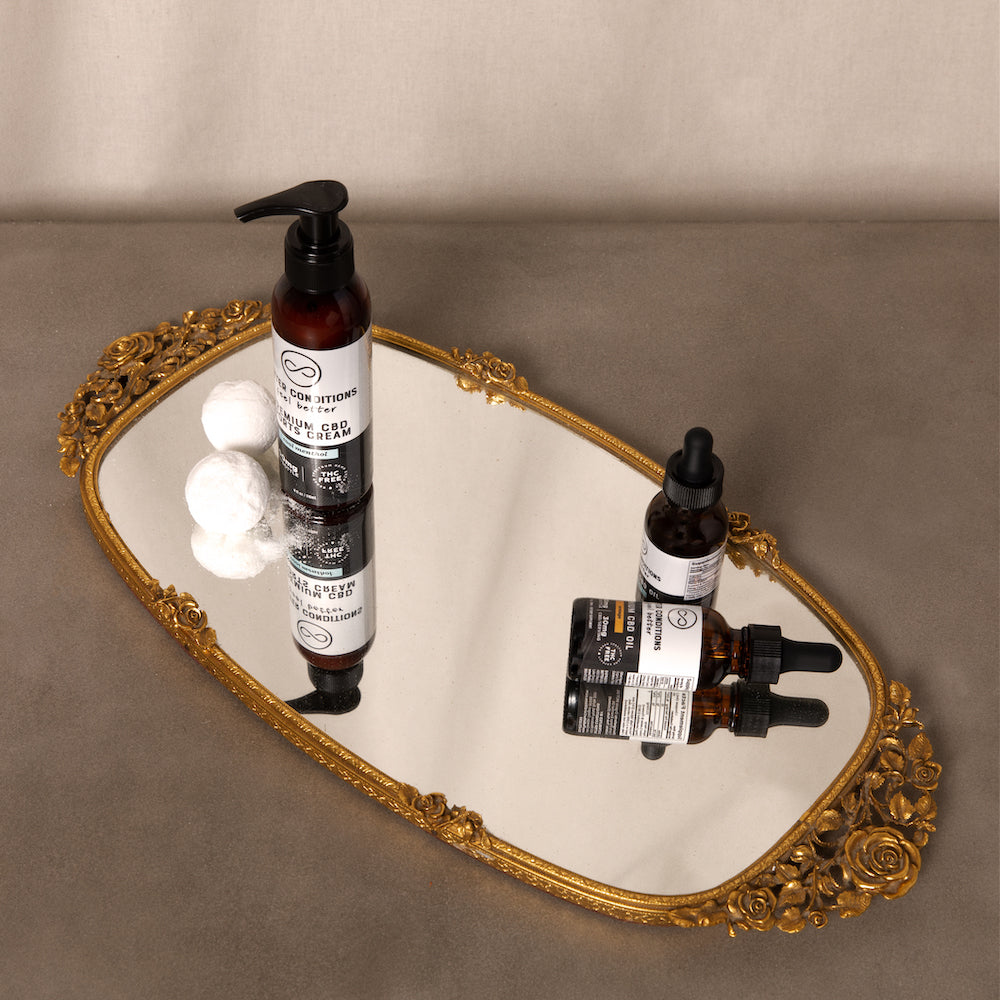CBD is all the rage right now (as it should be), but what even is it?
Let us explain.
If you’re new here, don’t stress. After all, if we wanted to add to your daily stress and confusion, we probably wouldn’t be in the business of providing you with a product that eases your mind and body. That’s why at Better Conditions CBD we want to do all the dirty work for you. We’ve done the research, so that you can reap all the benefits. Because CBD is somewhat of a new industry, it’s super easy for the narrative surrounding it to be misconstrued or misunderstood. Through this blog, we hope to stimulate conversation around the history, benefits, facts and misconceptions about CBD. We believe that knowledge is power, so let’s get into it.
Mom, where does CBD come from?
Let's break this down. First comes the Cannabis Sativa plant. This plant is full of magical substances, all with their own chemical makeups and subsequent benefits. The Cannabis Sativa plant actually contains about 540 chemical substances. Let’s go through those one by one. Number one: just kidding. Not only would that take an eternity, but it could also be considered somewhat off-topic based on the title of this subsection.
Instead, we’ll focus on two varieties that all of us know and many of us love: hemp and marijuana. Both hemp and marijuana come from the Cannabis Sativa plant. These two substances contain different levels of the cannabinoids THC and CBD. Simply put, cannabinoids are a group of substances found in the cannabis plant. The Cannabis Sativa plant produces around 80-100 cannabinoids, but the two most relevant to us are none other than THC and CBD.
Marijuana is to THC as Hemp is to CBD
Now we’re getting to the good stuff. THC (tetrahydrocannabinol) is psychoactive, which creates the feeling of intoxication synonymous with marijuana products. CBD (Cannabidiol), however, is not psychoactive. This means that CBD offers similar benefits of pain, anxiety and/or stress relief offered by marijuana only without the high. Marijuana has high levels of THC and typically low levels of CBD, while hemp has high levels of CBD and low levels of THC. In fact, in order for the Cannabis Sativa plant to be considered hemp in the United States, it must contain less than 0.3% THC. So, since we’re in the business of CBD, let’s shift our focus to hemp.
History of Hemp
Because the hemp plant is a renewable resource, it’s constantly praised for its number of uses and for its environmentally-sound impact. Ranging from its usage in textiles, building materials, paper, foods, body care, clothing, etc.--hemp is an amazingly versatile plant. In other words, hemp is tight. Hemp is tight. That’s a reference to the movie This Is the End, just in case that attempted joke missed the mark.
In recent years, there have been shifts in the laws surrounding industrial hemp. In 1937, The Marjuana Tax Act inadvertently made the growing of hemp illegal in the United States by banning all forms of cannabis plants and in 1970 hemp was formally made illegal under the Controlled Substances Act. The fact that hemp has no use as a recreational drug was left unacknowledged and all of it’s amazing uses were ignored. Fast forward to 2018, and the laws surrounding hemp have changed for the better, although with many restrictions. Monitoring the level of THC is just one of many restrictions that the United States hemp industry currently faces, but we’ll save that conversation for another time. So now that we know hemp’s life story, let’s talk about how we get from hemp to CBD oil.
From Hemp to CBD Oil
CBD oil is extracted from the aerial parts of the hemp plant, or the parts above the soil line including the flowers, stems and leaves. Extraction can happen in a variety of ways, but the most common are solvent-based methods. This typically involves solvents such as butane, propane and ethanol which are used to extract the CBD from the plant. Another popular, solventless technique, called the Supercritical Fluid Extraction (SFE) process, involves using co2 to extract the CBD.
There are three major types of CBD products: full spectrum, broad spectrum, and isolate. Full spectrum CBD is sometimes referred to as whole-plant CBD because the process does not isolate CBD from any of the other chemicals in the plant. This means full spectrum CBD can include CBD, terpenes(which is an essential oil found in all plants), other cannabinoids such as CBG and CBN, and small amounts of THC. Full-spectrum CBD can provide a magnified feeling of relief due to the other chemical components present. However, with full spectrum CBD, there is a chance for THC to show up on drug tests. This is why at Better Conditions, we use broad-spectrum CBD. Broad spectrum CBD gives all the benefits of CBD, other cannabinoids and terpenes, while eliminating all chances of ingesting THC. Lastly, isolated CBD is pure CBD, meaning that all other chemical components are removed from the mixture to get the full benefits of CBD alone.
And there you have it, a general overview of all things cannabis. Thank you for joining us on this walk through the origin story of CBD oil. Until next time.


